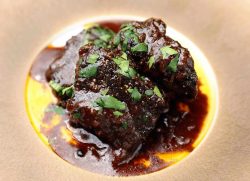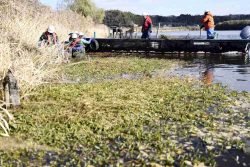Southern Japan’s Okayama Prefecture Produces Sweet Kinira Yellow Chives Perfect for Any Dish; Kinira’s Sweet, Mild Taste Great for Gyoza
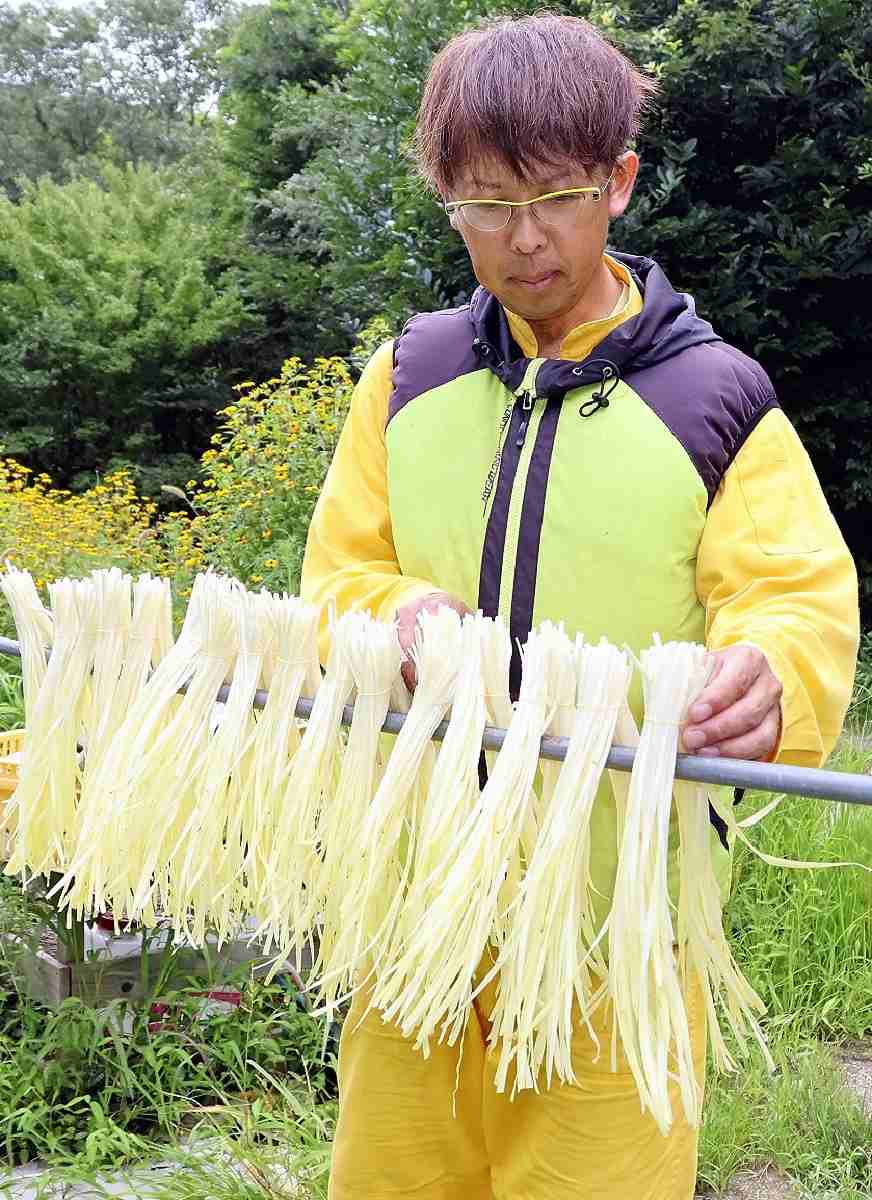
Teruyoshi Ueda dries harvested kinira in Okayama.
13:00 JST, September 15, 2024
As the dog days of summer continue, I have been searching for a high-energy food to power me through the heat and discovered kinira, yellow nira garlic chives. Okayama Prefecture accounts for 70% of their production.
I had heard that kinira looks and tastes different from regular green nira garlic chives. What kind of vegetable is it? Driven by curiosity, I drove to an area that produces it.
About 10 kilometers north of the center of Okayama City lies the Musa district in Kita Ward. The district is known as the home of kinira and stretches along the left bank of the Asahikawa River.
At the end of a mountainside road, I was greeted by Teruyoshi Ueda, 49. He was dressed in a yellow jumpsuit and calls himself the “kinira ambassador.”
“Kinira has a stronger umami taste than regular nira. The vegetable has a soft and sweet taste, and makes you feel good,” he said.
Ueda is originally from Hyogo Prefecture and his wife’s family ran a kinira farm in the Musa district. During a visit, he was so impressed by the taste of kinira in miso soup that he quit his job at a large specialty steel company to take over the farm.
Kinira is actually the same plant as nira.After nira is grown for two years and stores nutrients in its roots, its leaves are cut. The leaves are blocked from sunlight by a black sheet and you get kinira after a few weeks.
Harvesting and cleaning are all done by hand since the leaves are soft and easily damaged. Due to the time and effort required, kinira is treated as high-end produce.
When Ueda started farming in 1999, his farm was not well known in the prefecture, so he visited many restaurants to promote kinira. “We can be proud that the prefecture is the best producer in Japan only if local restaurants serve our products,” he said.
Since the number of restaurants that share his way of thinking has grown, the vegetable is now offered in a wide variety of dishes, he said.
Cooking of Art Ikiya serves the prefecture’s specialty cuisines in Okayama’s Kita Ward. “We have been working together to promote local production for local consumption,” said Ueda.
Takayuki Ogawa, the restaurant’s owner, said: “Kinira tastes great whether it is fried, deep-fried or raw. It is a versatile ingredient that can be used in all kinds of dishes.”
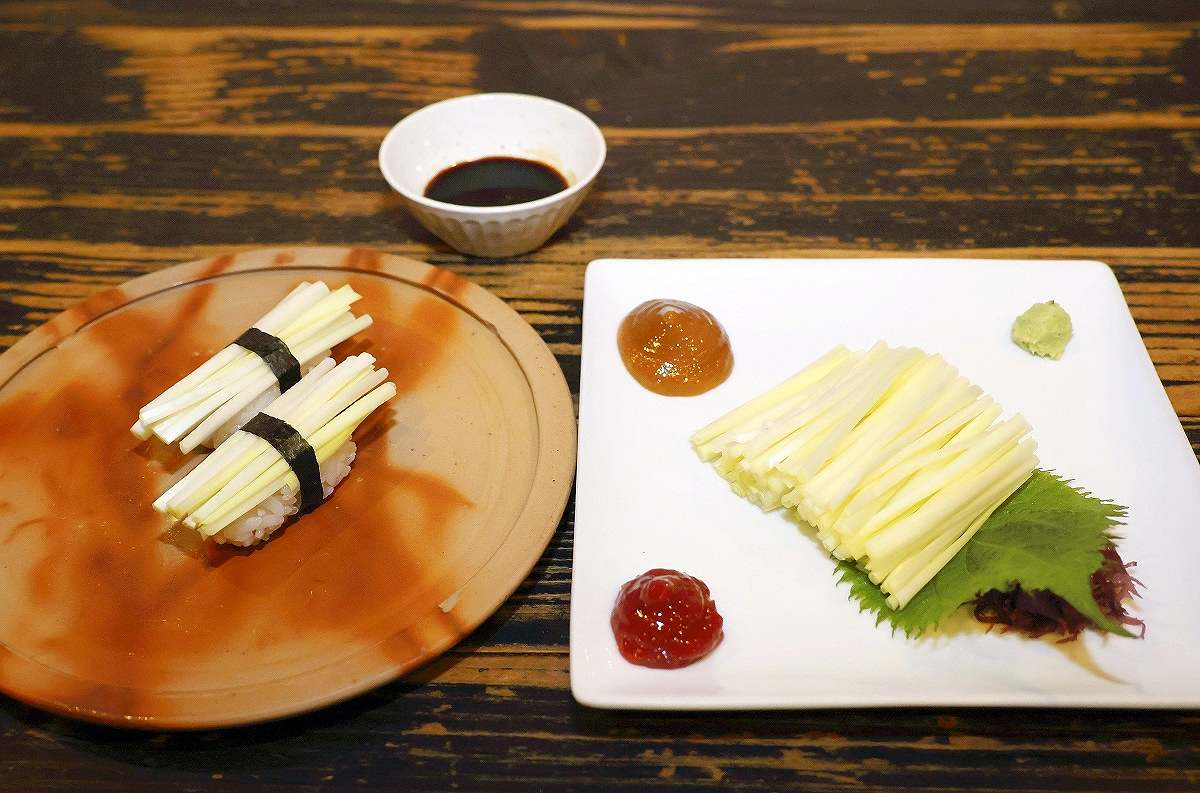
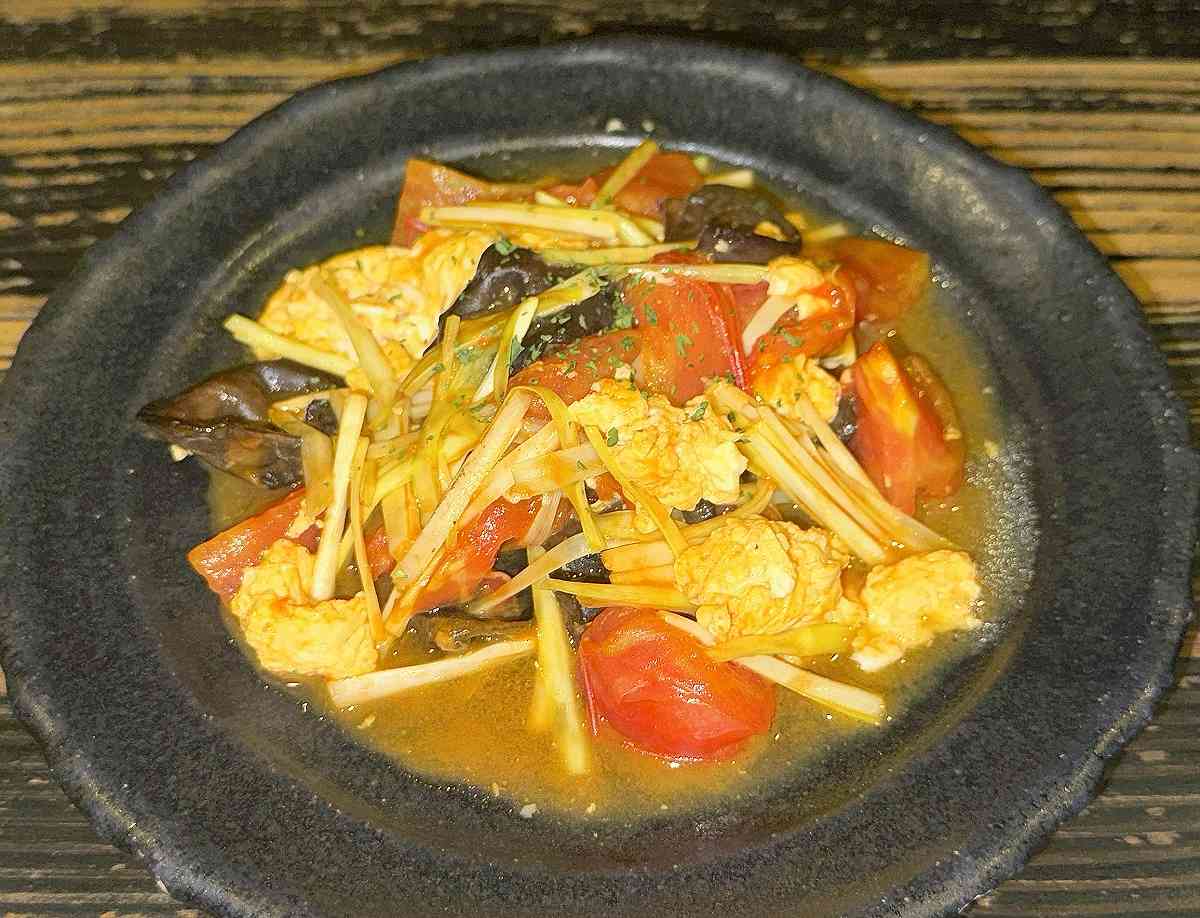
Top: Kinira no nigiri, left, and kinira no sashimi Down: A dish made with kinira, Momotaro tomatoes and eggs
I ordered the kinira no sashimi dish for ¥550. The fresh bunch of kinira had a crisp texture, and its sweetness was followed by a light spiciness.
The kinira no nigiri dish priced at ¥230 per piece, was sweeter. The secret is found in the sushi rice seasoning. The flavor of the kinira is complemented with balsamic vinegar and apple cider vinegar.
Kinira can be the star of a dish, but it shows its best when paired with other ingredients. The red and yellow colors of kinira mixed with Momotaro tomatoes and eggs make a dish, priced at ¥860, that is very appetizing. The umami of the kinira is exquisitely intertwined with the acidity of the tomatoes, and I couldn’t stop eating the dish.
The restaurant always offers more than 10 kinds of dishes using kinira. “I want to let people know about the deliciousness of fresh kinira that can only be found in my hometown,” Ogawa said.
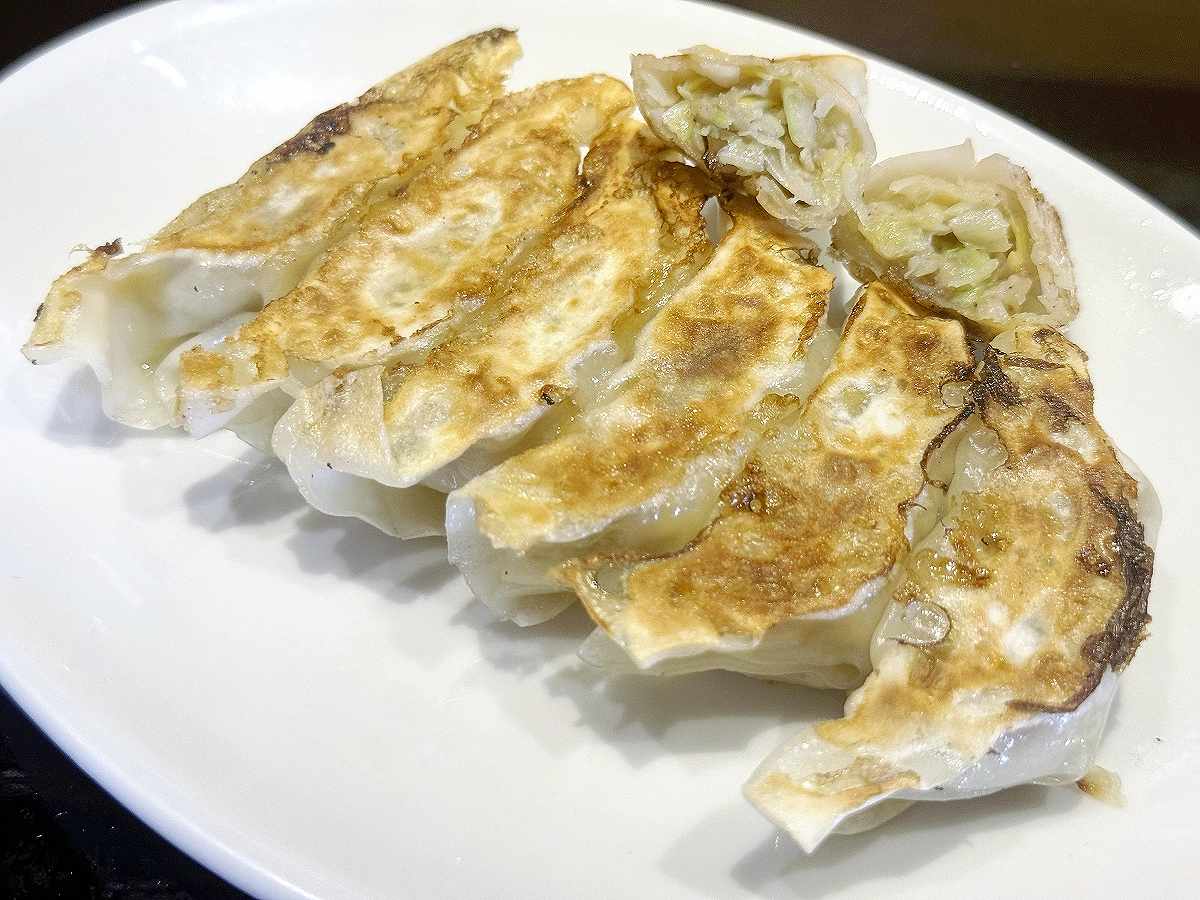
Okayama gyoza
Gyoza Chaoz, another restaurant in Kita Ward, offers 16 kinds of creative dumplings using kinira that can’t be overlooked.
The most highly recommended dish is Okayama gyoza, priced at ¥429 for six pieces. Compared to regular nira dumplings, the taste of Okayama gyoza is not as overpowering. The soft flavor of the gyoza and its sweetness make it very easy to eat your fill.
“Kinira and dumplings are a perfect match, and they could become a local delicacy of Okayama Prefecture,” said the restaurant’s owner, 47-year-old Tomonori Akita.
"Features" POPULAR ARTICLE
-
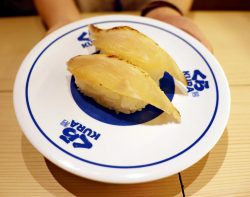
Pangasius Catfish Increasingly Featured on Japanese Restaurant Menus, Home Dining Tables Due to Affordability, Mild Flavor
-

Sumo Restaurant in Tokyo Teaches Foreign Visitors About the Ancient Sport, with Bouts Between Retired Rikishi
-

Autonomous Passenger Ship Connects Mainland with Remote Island in Seto Inland Sea; World’s 1st Commercially Operated Autonomous Vessel
-

Japanese Chef of Italian Restaurant in Tokyo Offers Milanese Risotto; Bright Colors, Rich Flavors in Simple Steps
-

Hokkaido Village Attracts Visitors with Red-crowned Cranes, National Special Natural Monument
JN ACCESS RANKING
-

Japan Govt Adopts Measures to Curb Mega Solar Power Plant Projects Amid Environmental Concerns
-

Core Inflation in Tokyo Slows in December but Stays above BOJ Target
-

Major Japan Firms’ Average Winter Bonus Tops ¥1 Mil.
-

Tokyo Zoo Wolf Believed to Have Used Vegetation Growing on Wall to Climb, Escape; Animal Living Happily after Recapture
-

Univ. in Japan, Tokyo-Based Startup to Develop Satellite for Disaster Prevention Measures, Bears


